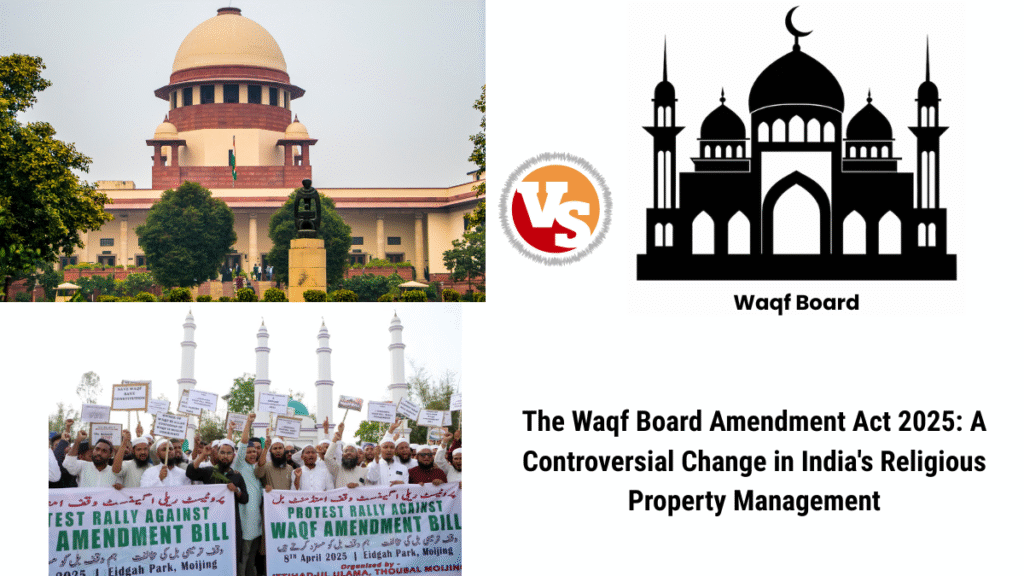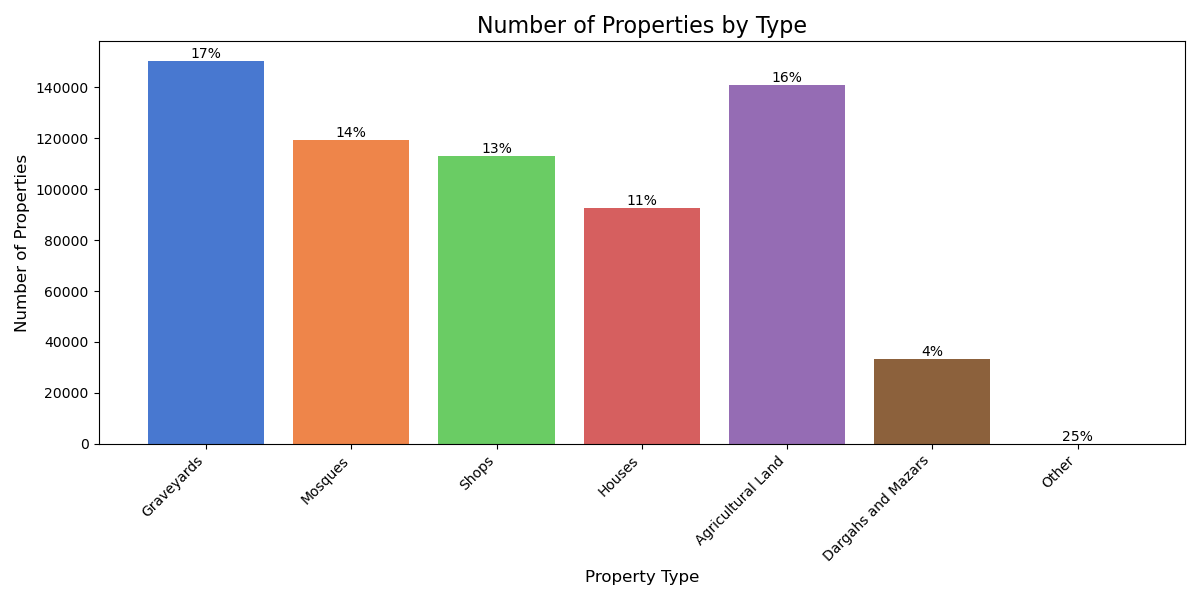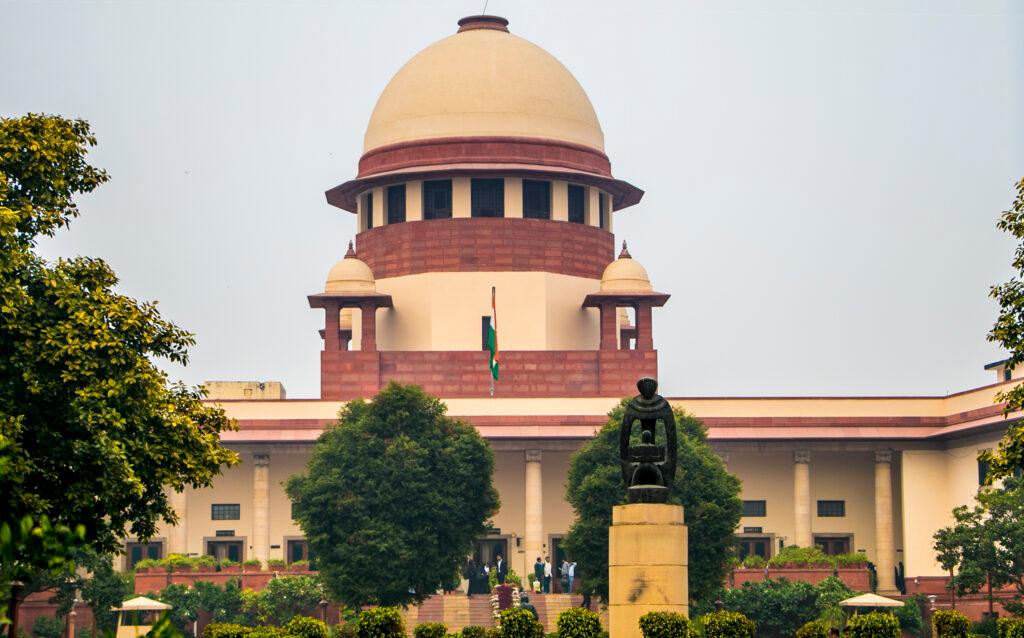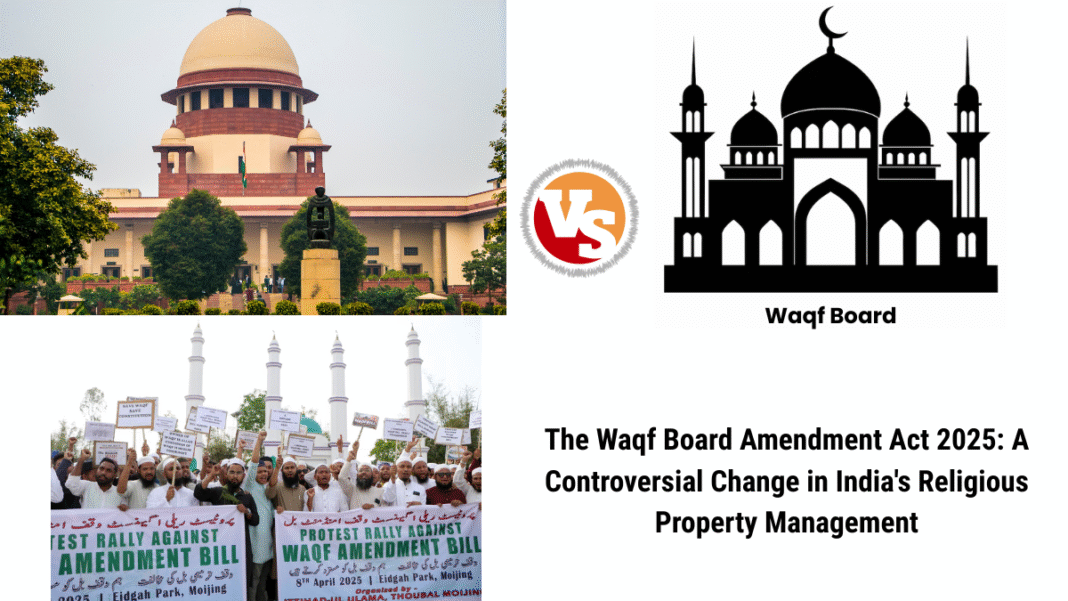In April 2025, India’s Parliament passed the Waqf Board Amendment Act. This important law has sparked debate, protests, and legal challenges nationwide. The act aims to reform how Waqf properties—endowments for religious or charitable purposes under Islamic law—are managed. The government calls it a move toward transparency and efficiency.

However, many Muslim communities, political parties, and civil society groups oppose it. They argue it threatens religious autonomy and could harm Muslim-owned properties. As India deals with this issue, the act has attracted international attention. It raises questions about governance, religious freedom, and minority rights in a diverse democracy.
This article explores the Waqf (Amendment) Act 2025. It covers its background, provisions, controversies, legal battles, social impact, and global reactions.
With a focus on facts and perspectives from all sides, it aims to shed light on this complex and sensitive issue.
Contents
Understanding Waqf Board: A Historical and Legal Perspective
What is Waqf Board?
Waqf comes from Islamic law. It means dedicating property for religious, charitable, or social uses. Once a property is declared Waqf Board, it cannot be sold or changed. Its use is limited to the purpose of the donation. In India, Waqf properties include mosques, graveyards, shrines, schools, hospitals, and large areas of land. These assets play an important role in the religious and social life of the Muslim community.
The concept of Waqf Board dates back to the 12th century in India, with the first recorded endowment established under Muhammad Ghori. For centuries, Muslim rulers like the Delhi Sultans and Mughal emperors expanded Waqf properties. A famous example is the Taj Mahal, which was given as Waqf Board. Today, the Waqf Act of 1995 governs these properties. It requires state-level Waqf Board to manage them, with oversight from the Central Waqf Board Council.
Scale of Waqf Properties in India
India has about 872,324 Waqf Board properties. They cover 940,000 acres. Their estimated value is ₹1.2 lakh crore, or about $14.4 billion. Additionally, there are 16,713 movable properties and 356,051 Waqf estates registered. The properties are diverse, as shown in the table below:
| Property Type | Number of Properties | Percentage |
| Graveyards | 150,516 | 17% |
| Mosques | 119,200 | 14% |
| Shops | 113,187 | 13% |
| Houses | 92,505 | 11% |
| Agricultural Land | 140,784 | 16% |
| Dargahs and Mazars | 33,492 | 4% |
| Other (Plots, Madrasas, etc.) | Remaining | 25% |

Uttar Pradesh leads with 232,547 properties (27% of the total), followed by West Bengal (80,480), Punjab (75,965), Tamil Nadu (66,092), and Karnataka (62,830). These assets hold great religious and cultural value. They also have economic potential. However, problems like encroachment, mismanagement, and litigation have long affected their use.
The Waqf Board (Amendment) Act 2025: Key Provisions
The Waqf (Amendment) Bill 2025 was introduced on August 8, 2025. The Lok Sabha passed it on April 2, 2025, and the Rajya Sabha followed on April 3, 2025. The bill received presidential assent on April 5, 2025 (Times of India). This act amends the Waqf Act of 1995 and repeals the Mussalman Wakf Act of 1923. It changes the name of the framework to the United Waqf Management, Empowerment, Efficiency, and Development Act, 1995 (UWMEED Act). Below are the key provisions:
- Composition of Waqf Boards:
- Allows non-Muslim members on the Central Waqf Board Council and State Waqf Boards, mandating at least two non-Muslims.
- Requires at least two Muslim women on these boards to promote gender inclusivity.
- Shifts from elected to government-nominated members, raising concerns about state control.
- Survey and Identification of Waqf Properties:
- Replaces the Survey Commissioner with the District Collector. The District Collector will survey Waqf properties and decide on ownership.
- States that government properties marked as Waqf will no longer be Waqf, which addresses disputed claims.
- Appeal Process:
- Removes the finality of Waqf Board Tribunal decisions, allowing appeals to the High Court within 90 days.
- Aims to provide judicial oversight and reduce delays in dispute resolution.
- Registration and Management:
- Empowers the Central Government to set rules for Waqf Board registration, auditing, and accounts.
- Introduces digitization and technology to enhance transparency and efficiency.
- Gender and Sectarian Inclusivity:
- Mandates representation of various Muslim sects on Waqf Board.
- Ensures female inheritance rights in Waqf properties, addressing gender disparities.
- Repeal of Older Legislation:
- Repeals the Mussalman Wakf Act 1923, consolidating Waqf Board governance under the amended 1995 Act.
These changes come from 25 recommendations by the Joint Parliamentary Committee (JPC). They aim to modernize Waqf administration but have stirred significant controversy.
Debates and Controversies
The act divides opinions. The government and opposition offer sharply different views.
Government’s Perspective: Reform and Transparency
- Tackling Mismanagement: The BJP claims this act combats corruption, encroachment, and neglect of Waqf property. They cite the Karnataka Waqf Board Land Scam as an example.
- Inclusivity: Including non-Muslims and women enhances diversity and expertise. This ultimately benefits the Muslim community (PIB).
- Transparency: Digitization and government oversight will increase accountability. Prime Minister Narendra Modi calls it a “watershed moment” for Waqf reform (Times of India).
- Welfare of Poor Muslims: BJP leaders, like Sudhanshu Trivedi, argue the act will help marginalized Muslims through Waqf properties (News on Air).
Opposition’s Perspective: Religious Rights and Political Motives
- Violation of Religious Autonomy: Critics, including Congress, AIMIM, and CPI, say the act breaks Article 26 of the Constitution. This article protects religious groups’ rights to manage their own affairs (Supreme Court Observer).
- Risk of Property Loss: The provision that allows the government to take Waqf properties raises fears of confiscation. For example, the demolition of a mosque in Ujjain highlights these concerns (Al Jazeera).
- Anti-Muslim Agenda: Opposition leaders, like Asaduddin Owaisi, call the act “targeted legislation.” They argue it fits Hindu nationalist policies meant to marginalize Muslims (Times of India).
- Constitutional Concerns: Including non-Muslims and increasing state control may weaken India’s secular nature. This has led to legal challenges.
Supreme Court Proceedings

The Supreme Court is reviewing the act’s constitutionality. As of April 2025, 73 petitions have been filed (India Today).
Petitioners include:
- Congress MP Mohammad Jawed
- AIMIM leader Asaduddin Owaisi
- CPI
- All India Muslim Personal Law Board
- and others.
Hearings started on April 15, 2025, with a three-judge bench led by Chief Justice Sanjiv Khanna.
Key Issues
- Religious Freedom: The court is looking into whether the act breaks Article 26. This includes questions about non-Muslim inclusion and government oversight.
- Property Protection: Concerns about possible property loss are significant. The bench is discussing safeguards for Waqf assets.
- Positive Aspects: The court sees benefits, such as transparency measures. However, it is concerned about state overreach (LiveLaw).
The court condemned related violence. Chief Justice Khanna described it as “very disturbing” (Indian Express).
Hearings continue, with the next scheduled for April 18, 2025.
Protests and Violence: A Human Toll
The act has triggered widespread protests, some escalating into violence. In West Bengal’s Murshidabad district, protests in April 2025 led to three deaths and over 150 arrests (Al Jazeera). West Bengal Chief Minister Mamata Banerjee declared the act inapplicable in her state, home to 25 million Muslims. Similar unrest occurred in Tripura’s Unakoti and Karnataka, reflecting deep community concerns.
The Calcutta High Court ordered troops to reduce violence. The Supreme Court stressed that protests should not disrupt public order (Times of India). These actions highlight the act’s divisive effects.
International Reaction
The act is mainly a domestic issue, but it has gained international attention. Media focused on minority rights, like Al Jazeera, has reported extensively on the protests. They highlighted both human and political aspects:
- Protests and Violence: Al Jazeera reported on deadly protests in West Bengal. They mentioned troop deployments and numerous arrests (Al Jazeera).
- Criticism of the Act: The outlet expressed concerns that the act could weaken Muslim rights. This may lead to property disputes or demolitions (Al Jazeera).
- Political Context: Coverage connected the act to India’s broader debate on minority rights. It noted that opposition plans to challenge it in court (Al Jazeera).
- Global Interest: The act has raised questions about India’s secularism and minority policies. However, there has been no major international backlash.
The BBC has also covered the act. They reported on claims that Muslim rights are weaker. The government says it is modernizing (BBC).
This coverage reflects global concern about religious freedom in India.
Must Read: Ultimate Rameshwaram Travel Guide: In-Depth Temple History, Dhanushkodi Ghost Town & Budget Planning 2025
Conclusion
The Waqf (Amendment) Act 2025 marks a key shift in how India handles religious properties. It greatly affects the Muslim community and the country’s secular values. The government aims for transparency and inclusivity. However, many worry about religious overreach and losing property, sparking intense debate. The act has led to 73 petitions in the Supreme Court. It also sparked violent protests and drew global attention. These events show the deep divisions in Indian society.
The ongoing legal conflict may shape how India manages religious freedom and government control. This will test the country’s commitment to secularism and minority rights in a more divided environment.
For now, the act remains a flashpoint, reflecting the complexities of managing diversity in one of the world’s largest democracies.



